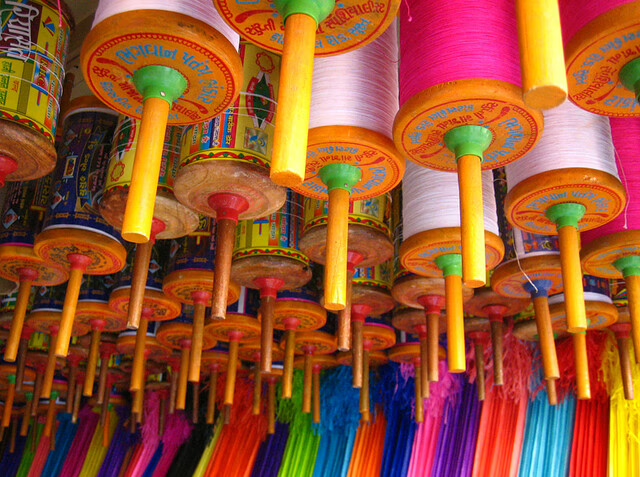Uttarayan, celebrated as a festival of kites, joy, and vibrant cultural traditions, holds a deeper scientific and astronomical significance that often goes unnoticed. This annual event, marked on January 14th or 15th depending on the year, signifies a major shift in the Earth’s celestial dynamics. It is much more than a festival; it’s a celebration of nature, new beginnings, and the alignment of our lives with cosmic rhythms. Here, we explore the science behind Uttarayan, its connection to the changing seasons, and its alignment with India’s agricultural calendar.
The Astronomical Importance of Makara Sankranti
Uttarayan coincides with Makara Sankranti, the day when the Sun begins its northward journey, known as the “uttarayan” motion in Sanskrit. On this day, the Sun transitions from the zodiac sign of Sagittarius (Dhanu) to Capricorn (Makara). This astronomical phenomenon marks the end of the winter solstice and the beginning of longer days in the Northern Hemisphere.
Scientifically, this change happens due to the tilt of the Earth’s axis and its elliptical orbit around the Sun. As the Earth moves in its orbit, the Sun appears to shift position relative to the constellations of the zodiac. Makara Sankranti marks a pivotal point where the Sun moves into a position that increases daylight hours, symbolizing a shift from darkness to light. This gradual lengthening of days is celebrated as a metaphor for hope, positivity, and renewal.
Uttarayan: A Time for New Beginnings
In Indian philosophy and spirituality, Uttarayan is considered an auspicious period. The increasing presence of sunlight is seen as a harbinger of prosperity and growth. According to ancient texts, the northward movement of the Sun is a time when the environment becomes more conducive to spiritual practices, self-improvement, and setting new goals.
In Hindu tradition, Uttarayan is also believed to be the time when the gods awaken after a six-month period of slumber (Dakshinayan). This celestial shift symbolizes divine blessings, making it an ideal time for religious ceremonies, prayers, and acts of charity. People celebrate by flying kites, symbolizing the act of letting go of negativity and soaring to greater heights in life.

The Agricultural Connection
India’s deeply rooted agricultural heritage is another reason Uttarayan holds significant importance. The festival aligns with the end of the winter harvest season and the beginning of preparations for the next crop cycle. Farmers express gratitude to the Sun for a bountiful harvest and pray for future prosperity.
In many regions, crops like wheat, mustard, and sugarcane are harvested during this time. The freshly harvested produce is often used to prepare festive delicacies, such as tilgul (sesame and jaggery sweets), chikkis, and undhiyu, a traditional Gujarati dish made from seasonal vegetables.
The Sun’s transition to Capricorn also aligns with a favorable climate for agricultural activities. Longer days provide more sunlight for crops, aiding their growth and ensuring a stable food supply. For farmers, Uttarayan is both a spiritual celebration and a practical acknowledgment of nature’s role in their livelihood.
The Science of Seasons and Traditions
Uttarayan showcases the intricate relationship between celestial events and human life. In ancient India, astronomers and astrologers observed the Sun’s movement meticulously, linking it to seasonal changes and agricultural needs. Their insights laid the foundation for festivals like Uttarayan, which bridge science, spirituality, and cultural traditions.
The celebration of Uttarayan also promotes awareness of seasonal transitions. By engaging in outdoor activities like kite flying, people absorb Vitamin D from the Sun, boosting their immunity during the winter months. Traditional foods made with sesame and jaggery provide energy and warmth, further enhancing health during this transitional period.
Uttarayan is much more than a festival; it’s a celebration of cosmic harmony, renewal, and gratitude. The Sun’s northward journey symbolizes hope, growth, and the triumph of light over darkness. For farmers, it marks the end of one cycle and the beginning of another, reflecting their deep connection to nature.
As we celebrate Uttarayan with colorful kites and festive meals, we honor the ancient wisdom that recognized the profound link between celestial movements and human life. By understanding the science and significance of this festival, we can appreciate its timeless relevance and the universal values it embodies. So, the next time you let your kite soar high, remember that you, too, are part of a greater cosmic rhythm, reaching for new heights and embracing brighter days ahead.
Want to experience an Uttarayan Festival?
Join us and 2000 people in Los Angeles to fly kites and celebrate this festival! We will have amazing food, music, kites and a LOT of people!

